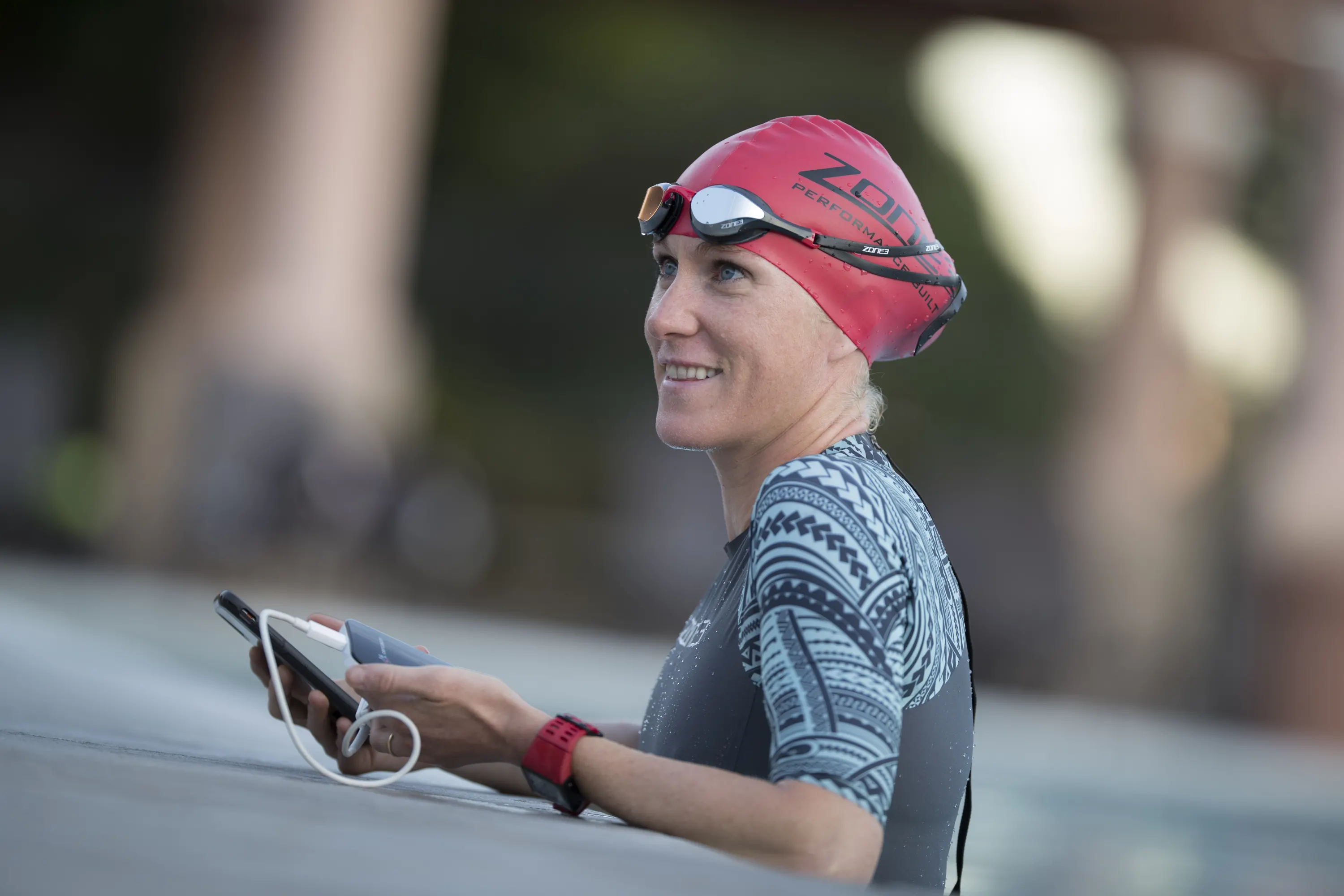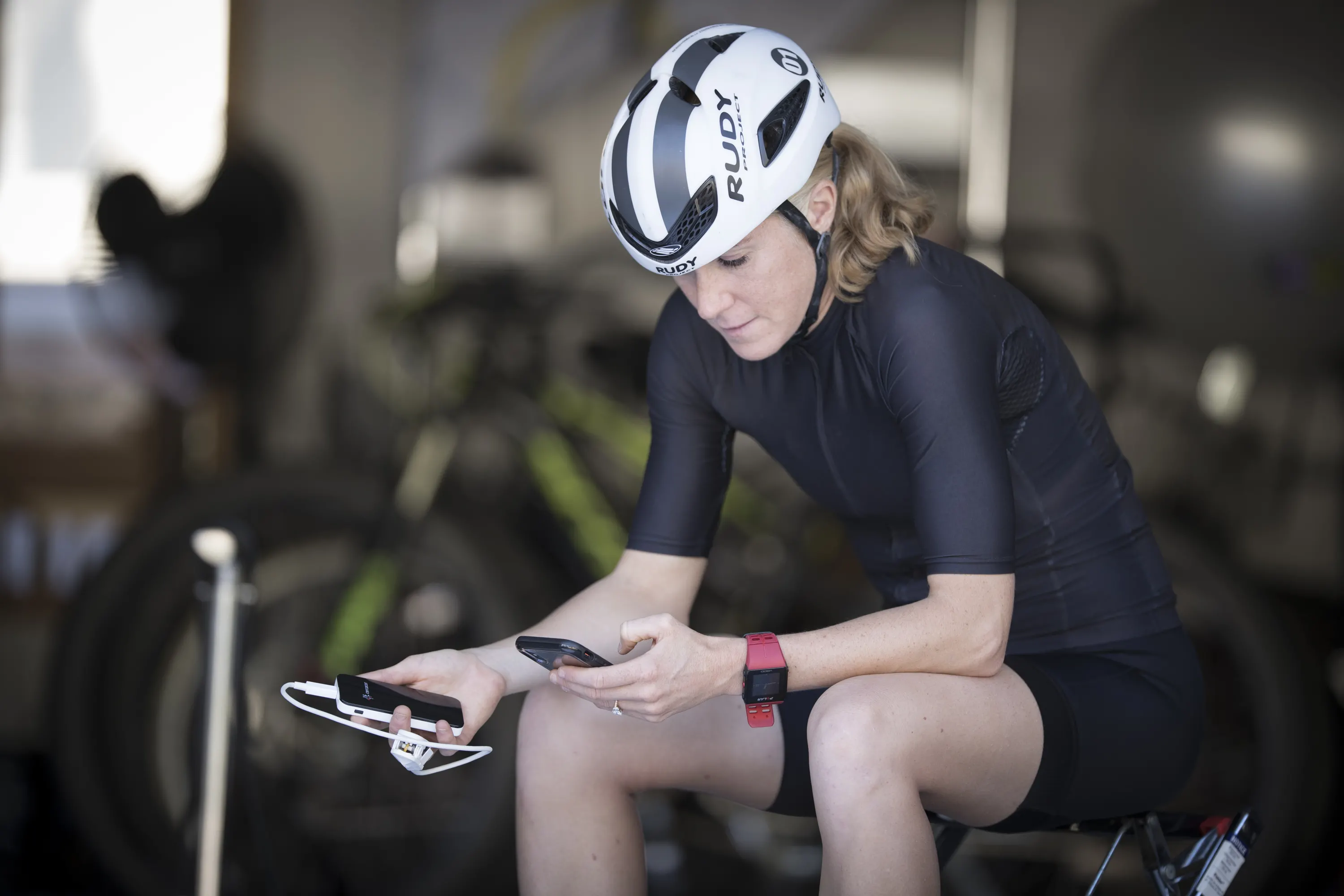By Sarah Piampiano
In the world of endurance sports, it can be hard to know when to push forward and when to pull back. Have you ever had the days when you wake up feeling tired and stiff and think there is no way you will be able to perform in training, but then you put up one of your best-ever sessions? Or what about the days when you wake up feeling great but end up being flat on your run?
As well as we know our bodies, sometimes the signs of performance potential on any given day are hard to read, and very often, the signs for sickness, over training, and injury can be brushed to the side until it is too late.

A few years ago, I began using Cercacor’s Ember device to monitor my recovery, fitness gains, immune responses to training loads, and adaptations to things like altitude and heat training. I’ve always been one of those people who will go go go until I am broken, so incorporating the Ember device into my daily routine proved to be a game changer. It has allowed me, on a day-to-day basis, to give myself a “second check” to gauge my recovery and readiness vs how my body is feeling/how I WANT my body to feel. I also use it to compare trends in performance vs the physiological data that Ember provides me over a week-to-week and month-to-month basis.
The Cercacor Ember device measures and tracks 10 key physiological metrics. In less than a minute, I’m able to capture my hemoglobin, pulse rate variability (very similar to HRV), pulse rate, respiratory rate, pleth variability index, perfusion index, oxygen saturation, carbon monoxide, oxygen content, and methemoglobin on a small non-invasive hand-held device. It also helps me track my sleep wellness and select my overall emotional wellbeing at the time of each measurement.
I typically take the measurements 2x per day: first thing in the morning as soon as I wake up and again at night before I go to sleep.

When I wake up in the morning, I look at the numbers as a sign of readiness and recovery. If I am recovered and well hydrated, this is what I typically will see:
Pulse Rate - Between 38-44
Respiratory Rate - Below 10
Oxygen Saturation - 97-100%
Pulse Rate Variability - 75-100
Pleth Variability Index (measuring dehydration) - Below 12
Perfusion Index - Over 5
Hemoglobin - Over 13
Emotional Well-being - Typically Joyful, excited, motivated, hopeful
Sleep Rate - High
On days when I am not recovered these numbers can be all over the place. My PRV can be in the teens, or twenties, my respiratory rate is higher (15), my pulse rate can be in the 50’s, my emotional wellness rating is typically “tired”, “irritated”, “discouraged”, and my sleep rating is often low - all signs that my body is working a bit harder to recover and is a warning flag for me. It provides me information to discuss with my coach and evaluate if we push ahead, or pull back.
In the evening, I monitor my Pleth Variability Index to ensure I have re-hydrated well as well as gauge how much stress my body is under from my daily training load. On heavy days, my pulse rate can be well into the high 60’s. Also on these days, I will see a high PI number as well as elevated hemoglobin (this is because my body is still “revved up” from the workload and increase in blood circulation, leading to elevated hemoglobin numbers). Things like dehydration can also cause Hemoglobin numbers to artificially inflate, so I usually compare those numbers to my PVI. On lighter days, I would expect to see numbers that reflect trends toward recovery - lower respiratory and pulse rates, strong PRV, and relatively constant hemoglobin numbers.
Here is a recent example:
In July, I took on a heavy and ambitious race and travel schedule. I raced a 70.3 in Ecuador on July 7th, then travelled to Kazakhstan (with a 13 hour time change) to compete in another 70.3 the following weekend. I then flew to Hamburg, Germany (another 5 hour time change) where I raced an Ironman 2 weeks later on July 28th. The back to back 70.3’s coupled with the significant amount of travel and time zone crossings took a lot out of me. I arrived in Hamburg tired and depleted. Typically with an Ironman in 2 weeks away, I would be itching to get in a strong final block of work regardless of how I felt. But everything about how I was feeling and what my Ember was telling me painted a different picture. My resting pulse rate and respiratory rates were elevated, and my PRV had plummeted. Both measurements first thing in the morning and at night everything pointed to me being highly under-recovered. I still had some work to do training-wise, but I was feeling tired and sluggish. There were some days when even recovery sessions were feeling hard. You can see (below) that between early July, when I raced in Ecuador) to the middle of July, my PRV was well below what it had been.
Instead of pushing through my coach, Matt Dixon from purplepatch fitness, only re-emphasized (over and over) the importance of rest. And I did just that. I was in such a hole. We realized it was unrealistic that I was going to come out of it by race day, but the goal was to recover as much as I could. I admittedly never felt great during the race in Hamburg, but, in the days before the race I finally started to feel better. I started getting a spark back. I didn’t feel quite so sluggish and my energy was returning. You can see a bump up in my PRV during these few days, reflecting my body beginning to recover, yet I was nowhere near where I had been early in July. After Hamburg I went into a pretty big hole of fatigue. As the days and weeks went by I wasn’t feeling a whole lot better. My post-race crankiness was at an all time high (sorry to my husband!!), I was exhausted but not sleeping well (which for me is a big sign of being depleted), every training session felt like a slog and I way underperforming. None of these are uncommon for me in the few weeks after an Ironman, but I can typically feel myself coming out of the fatigue and fog after 2 or 3 weeks. This was taking longer than normal - something we expected, but was still hard to go through mentally. My ember device showed this. I WANTED to be training hard, but until my body recovered I needed to keep it light. Slowly over the course of the last month things have improved. My PRV has increased back to normal levels, my resting HR has gone back down to normal, and I’m feeling more energized. This is reflected both in how I feel subjectively as well as what the numbers are suggesting, giving me confidence to push ahead into my next block of hard training.
Our body can tell us a LOT, and it is important to listen to it. But having a second check of where you are at can be extremely helpful and useful as well - particularly around recovery during either heavy training blocks or when recovering from races. Sometimes we need that second check to help keep us smart in our training approach, which, ultimately, keeps us healthy and performing at our best.
Best of luck! Have fun and be safe out there!
-Sarah





